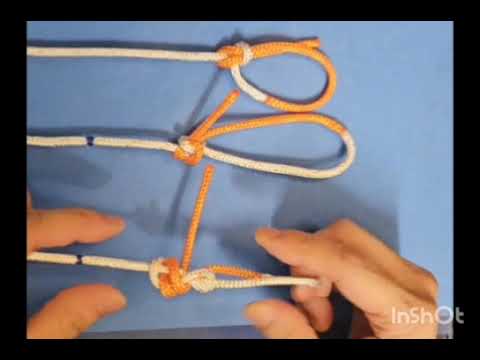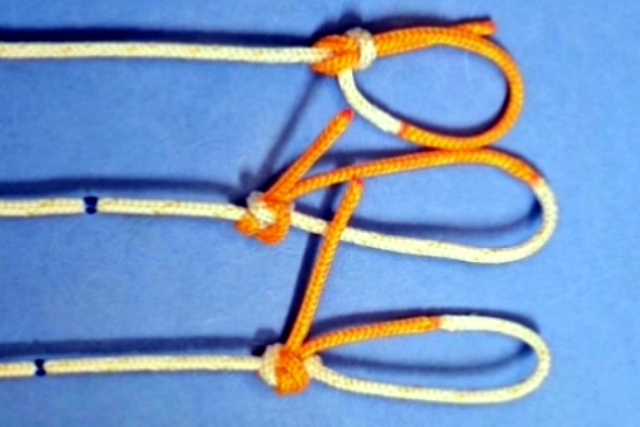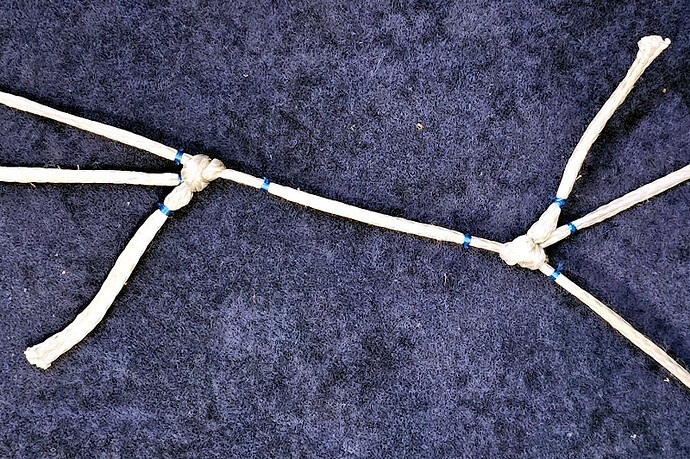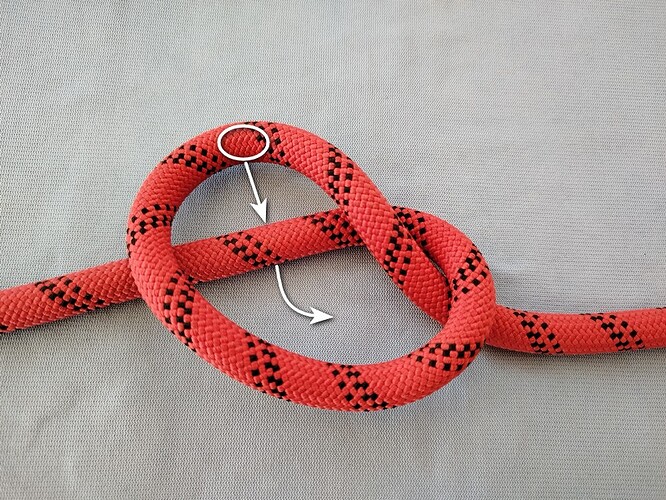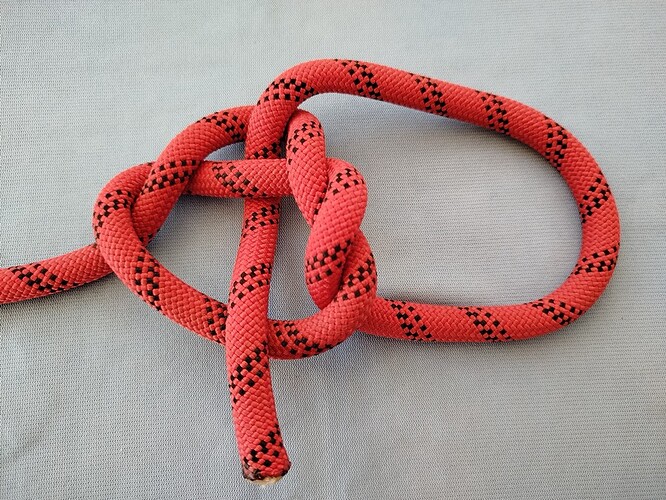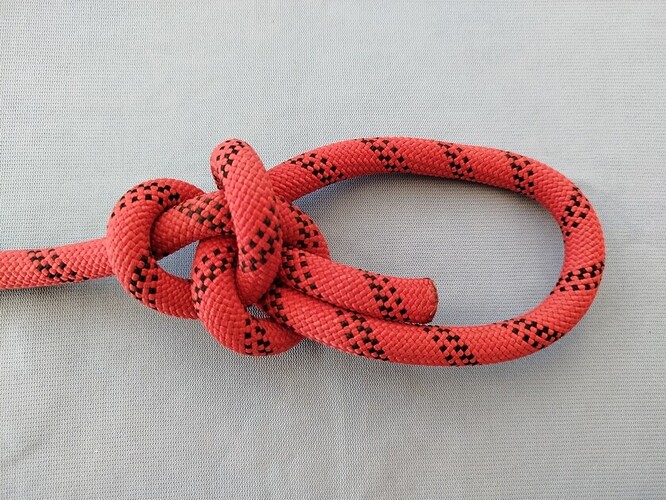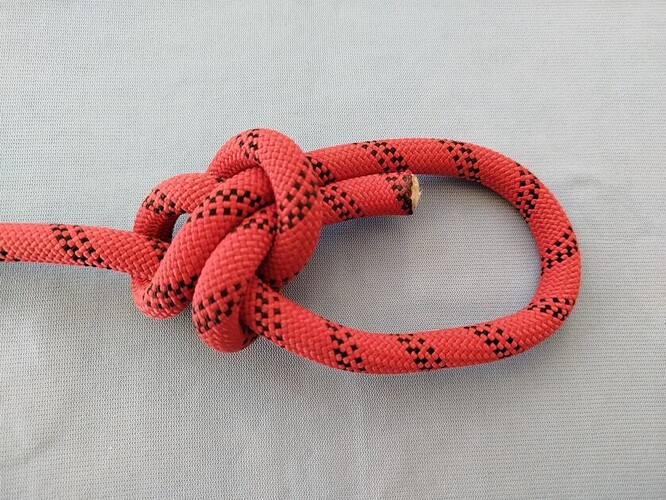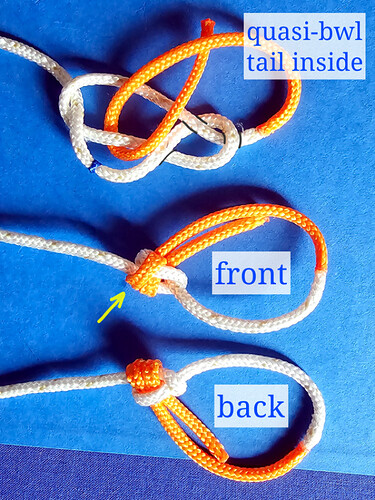Hello Alana
Very good demonstration and analysis including also video with quite observable tying techniques.
I’m looking into your second marlin spike-like configuration, and starting with good news first, i maintain that, the knot is stable, secure with a rock solid core in its final energy stable state and it is generally a fine method to stabilise a crossing knot.
However, i see that you are using a small diameter, relatively soft rope, and with only hand tightening (cinching), your core is subjected to some modifications that alternate its initial form, until the energy stable point is reached.
This very state shown in your illustration, looks like a blop of ropes, with no actual access point to interact with after being subjected to a serious level of loading (more than 40 kg).
A folded bight structure and also severely compressed by SP, impedes the loosening process to a serious extent.
Try to imagine the state of this core with a stiffer large diameter static rope, in heavy stress conditions.The loosening situation could be achieved only with the use of the right tool, such as a hammer.
That’s also the reason that i do not dare delving into your third configuration, because more complexity in the nipping component, would be no less than a very stiff and hardly manageable core.
In my opinion, it would be great only for light weight.
Very smart, marlin spike manipulation tying techniques, i’ll give you that.
I believe these structures are not well documented, the closest thing i have seen is the following Alan Lee’s marlin spike loop, where the returning structure is actually a loop and not a bight.Maybe the loop is a more effective returning binder with less distortion?Can’t be 100% sure.
https://www.youtube.com/watch?v=TOaVQJl_dEc
Glad to see you exploring bowlines  .
.
Another video of the original creator Alan Lee testing his marlin spike loop with a small diameter soft rope up to destruction!Easy loosening with this type of rope.
https://www.youtube.com/watch?v=iye0tGpG3q0
![]()
